Last Updated on February 9, 2024 by Michelle
I’m on a mission–everyone should know how to bake with lard. Why? Because it’s a truly healthy fat, if it’s sourced from a pasture-raised pig. And as long as you know How to Render Lard, or purchase your lard from a good source (more on that below), it’s amazing in baking.
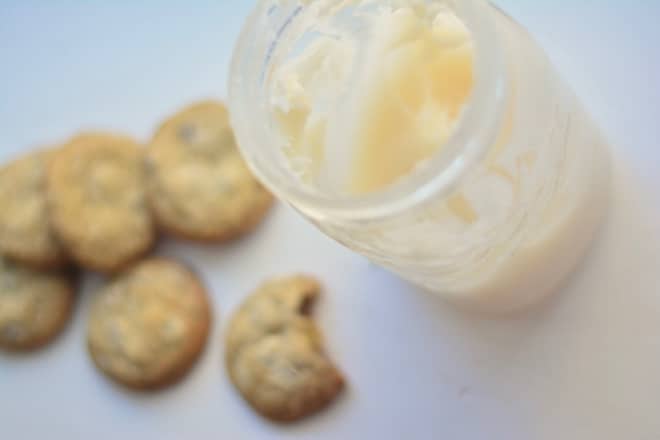
How do you bake with lard?
Essentially, you can use lard in your kitchen any way you would use other fats. Instead of canola oil in your skillet, use a TB of lard. Instead of margarine in a cake, use equal amounts of lard. Instead of butter in cookies, use the equivalent of lard, or half butter half lard.
It does behave differently than other oils. That’s because with lard, the fats stay intact when they melt. With butter, on the other hand, the oil and the milk separate at higher temperatures. The oilier the food, the more likely it will be harder when it cools, so cookies made with butter will be crisper and cookies made with lard will be chewier.
You’ll also find biscuits and pie crusts and pastries made with lard are truly amazing, flaky, and so light.
Tips for baking with lard in place of butter:
- You can substitute lard for butter in a 1:1 ratio.
- You can also use 1/2 butter and 1/2 lard in any recipe, to keep some of the butter’s flavor but add in the health benefits of lard.
- Experiment with small flavor additions to recipes where you’ve swapped out butter for lard, again, since butter offers a true flavor and lard is flavorless (unless it’s poorly rendered, then it’s bacon flavored. More on proper rendering techniques here).
- My favorite example of the above tip is to add chopped mint to chocolate chip cookies. You barely taste the mint, but wow is the overall impact amazing. See my recipe for Chocolate Chip Cookies made with Lard here.
- Also consider adding a few pinches extra of salt or sugar, again, to provide more flavor in the absence of butter.
- Cookies made with butter will always run and need to be at least 2″ apart on cookies trays. Cookies made with lard will not run, so you can place your dough balls much closer together.
- If I’m using butter in recipes I will often cook the baked goods a few minutes longer than I do with lard.
- With cookies made with butter I will always let them cool completely on the warm-out-of-the-oven cookie sheets before removing them to a cooling rack. But with the same recipe substituting lard for butter I never do this, but instead remove the cookies from the hot trays right to a cooling rack. The lard solidifies into chewiness so much easier than butter and I don’t want them getting too done on the hot trays.
- I render my lard and freeze it in butter-shaped molds, so it’s super easy to use in place on butter in any recipe. (The molds even have TB marks, so you can use the lard by the TB. How cool is that?)
- If you want to make sticks of lard, with molds like mine, you can then freeze them, in freezer-safe containers, and just grab a bar or two for your next recipe.
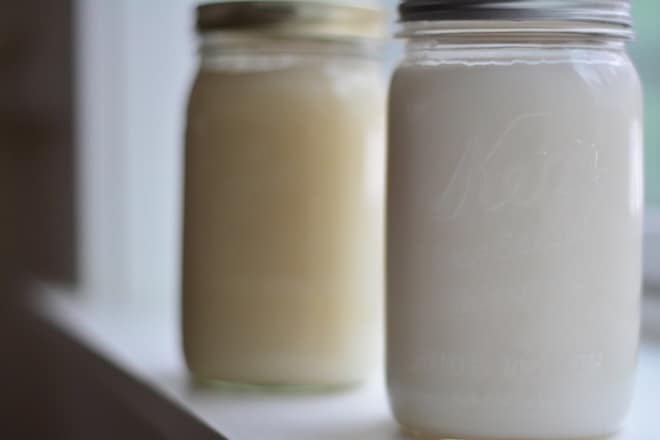
Why bake with lard?
It’s a long sordid history of when and why animal fats went out of fashion, but it’s my firm belief that the small revival we’re seeing of folks seeing the benefit of real fat, sourced from well-raised animals instead of a chemical lab is a very good thing.
I was on the Old Fashioned on Purpose podcast recently talking about the history behind this crazy change in the way our nation views good fats. Join here that conversation right here.
But let’s break down why animal fats are good for us. Our body needs the cholesterol and saturated fats found in animal fats, like lard and tallow, for so many reasons.
Here are some of the ways lard benefits our health:
Our organs need cholesterol to function well.
Every cell in our body has cholesterol in it. We need it at a very basic level. Cholesterol is a waxy, whitish-yellow fat and a crucial building block in cell membranes.
We need healthy fats in our diet for a healthy brain & emotions.
Our brain needs cholesterol, because we can’t create neurotransmitters without it It’s interesting to wonder if that brain fog we sometimes experience is because we haven’t had any fatty (good fat) foods recently. Numerous studies (source) have shown that a low-cholesterol diet is linked to severe depression.
In scientific trials that studied people who ate less fats, they found an increase in suicide and violence-related death. (source) there are many other factors at play in such things, we can’t say definitively the correlation is there, but it’s definitely worth noting.
Healthy fats, like lard, are good for us.
Who would’ve thought we’d be eating more nutritiously by eating fat? But it’s true. Lard is high is B vitamins, which play an important role in our immune response.
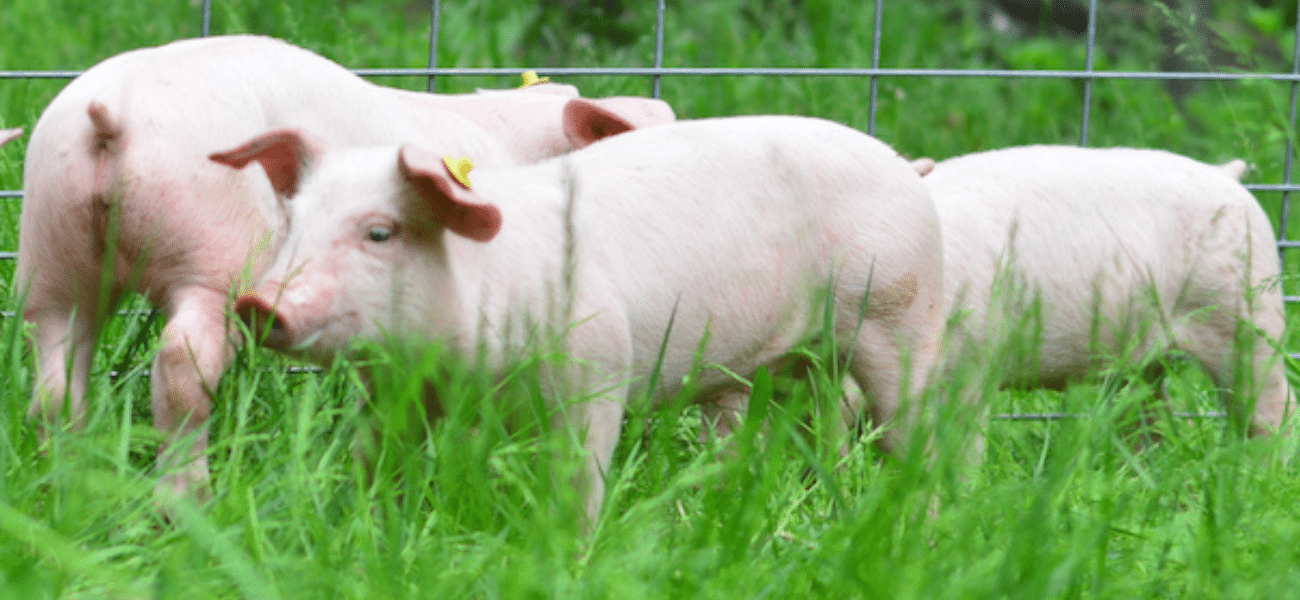
Lard is high in vitamin D.
Lard—well all products we can eat from pastured pigs—is one of a few food sources high in vitamin D. Because it is sourced from a pig’s back, pork lard made from back fat is very high in vitamin D. Which makes sense. The pigs spend their lifetime basking in the sun and absorbing it through their skin.
Current research shows that we should have 250 micrograms of vitamin D per day. Guess how much lard, rendered from back fat, you need to have 250 micrograms of vitamin D? One tablespoon. That’s it. Yes, lard from pastured pigs contained 1000 IU of vitamin D per tablespoon.
Lard helps you absorb important vitamins.
Not only does lard come loaded with vitamins, but it helps us absorb vitamins as well. Vitamins A, D, E, and K, which are fat-soluble, couldn’t be absorbed by our bodies without fat in our diet.
Healthy fats, like lard, give us that feeling of being full and satisfied so we don’t over eat.
It’s so helpful that the good fats make our bodies full, because it helps us avoid the temptation of eating processed food, loaded with hydrogenated oils, which are truly the bad fats.
Eating healthy fats with your meal keeps your blood sugar from spiking. So you don’t get that crash (and feel tired) after eating.
So unlike the processed, high-sugar foods that leave you feeling like crap 10 minutes after you eat them, real food that includes real fats don’t cause a “crash.”
In the end, 30% of your calories should come from fats and they should be eaten with every meal.
Keep in mind, though, that moderation is important. Every gram of fat has nine calories. Carbohydrates and proteins have four calories per gram.
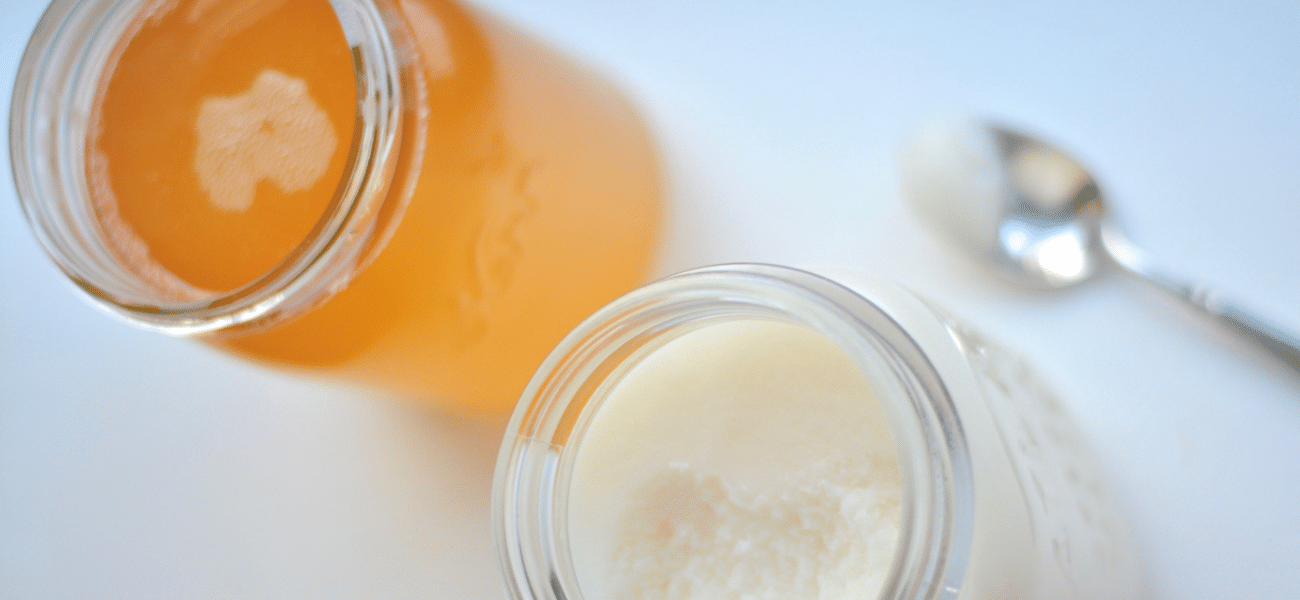
So what are the bad fats?
All processed fats, which have been made in a lab, are made with hydrogenated oils. (More below on how these oils in our diet impact our health.)
These oils start off just fine. They’re oil from plants (olives, sunflowers…). Then they go to a lab where an extra hydrogen molecules is parked on every open space in that oil. Why? Lab-produced oils have a very long shelf life and are cheaper to produce than real fats.
What foods include hydrogenated oils?
- margarines
- crisco
- most packaged foods
- many salad dressings
- baked goods at the grocery store
- ready-to-use cookie dough (maybe the worst culprit).
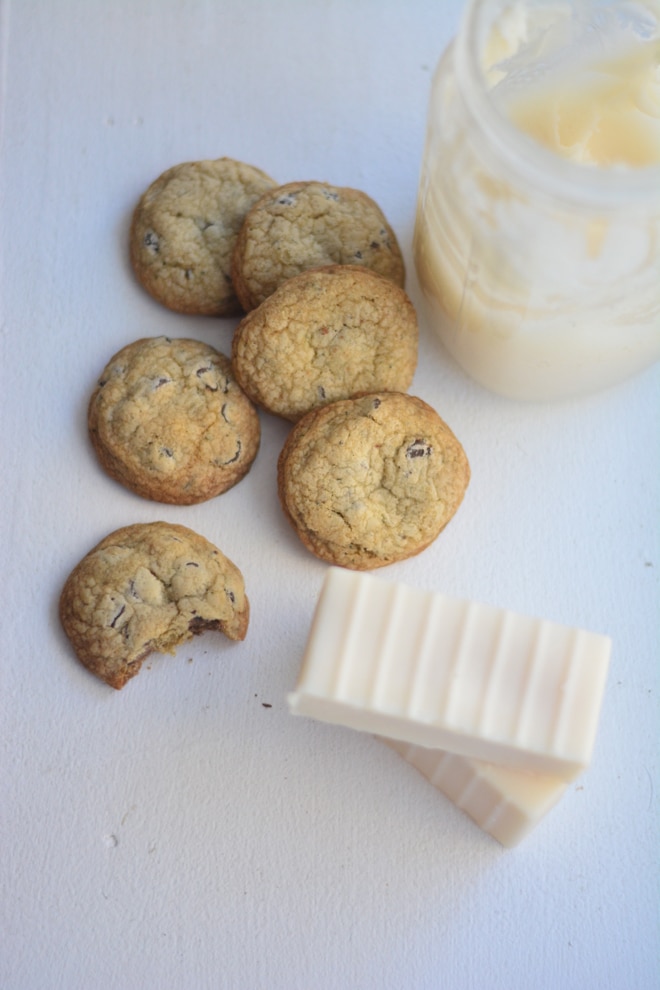
What’s wrong with fake fats?
The list is very long when you start investigating the evidence. When you start looking for articles in scientific journals that describe the findings and results when scientists dive into this very question of “what’s wrong with fake fats?” This list is only a little tip of a very big iceberg.
Trans fat in hydrogenated oil has been shown to:
Negatively impact fetal development (source)
Lower birth weight (source)
Increase diabetes (source)
Increase osteoporosis (source)
Reduce milk supply in breastfeeding women (source)
Lower testosterone (source)
Lower normal sperm count (source)
Increase heart disease (source)
Increase breast cancer (source)
Increase coronary heart disease [especially from margarine use] (source)
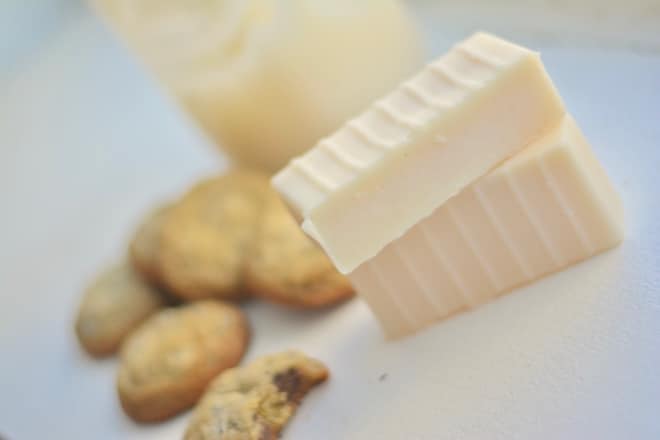
How does lard compare to butter?
The main difference is their source. Butter is a dairy product and lard is a pork product. But both are pretty wonderful.
Their numbers are similar, whether you’re talking calories or smoke point, but here’s the main differences I have found:
- Butter has 102 calories per tablespoon. Lard has 115.
- Lard has a little higher smoke point 370, compared to butter’s 350. But ghee (butter with all extra moisture removed) sits at an amazing smoke point of 485.
- Pastured lard is one of the best vitamin D sources on the planet. Butter offers a little, but lard takes the cake in this category. In 1 tb of lard you have 1,000 IU of vitamin D (1 tb butter has 9 IU) . Daily recommended amount is 600-4,000.
- Fats in lard remain intact and soft after melting, but butter separates into oil and milk solids. Butter may wind up making recipes seem a bit oilier and also harder once they cool down, while lard tends to keep them soft. (Cookies are so soft and chewy and they don’t flatten out and spread when baking.)
- And, random fact, lard is more multi-purpose… you can’t use butter to make soap or candles.
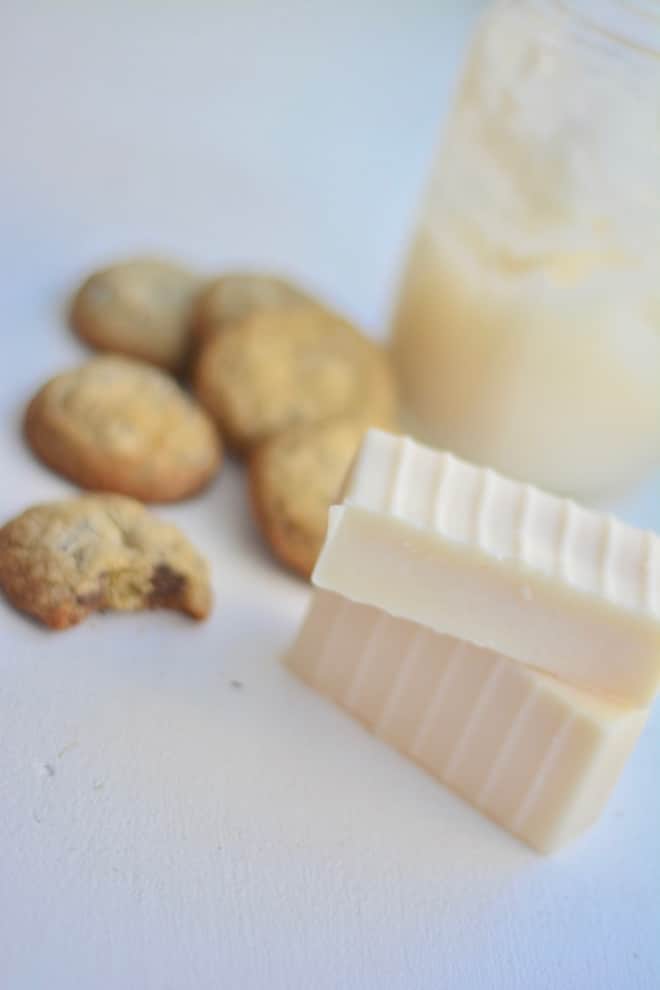
Why is lard not used in baking?
Given all of its virtues, I do often wonder why lard isn’t more popular in American kitchens, but I think a lot of it comes down to ease. It’s a lot easier to grab an oil from the store than find a source for pork fat and learn how to render lard. (Here’s my Complete Guide to Rendering Lard, btw.)
And of course many just don’t KNOW the benefits of using lard. Please pin this article and share it with your friends (please tag me if you’re sharing on social media so I can share too).
Which is better in baking–lard or Crisco?
Please, if you have Crisco in your kitchen, only use it if you need to make some emergency stash of candles. It won’t burn pretty, but that is the only thing I can think of that Crisco is good for. But lard, rendered from pork fat (NOT the hydrogenated version of “lard” you might find in stores occasionally) is all-natural, good-for-you fat.
RuthAnn Zimmerman and I chatted about this very topic (and the ONE thing RuthAnn will still bake with Crisco & why) in a recent episode of the Simple Doesn’t Mean Easy podcast.
What are some other great fats to use in the kitchen?
1. Avocado Oil
2. Ghee
3. Palm Oil
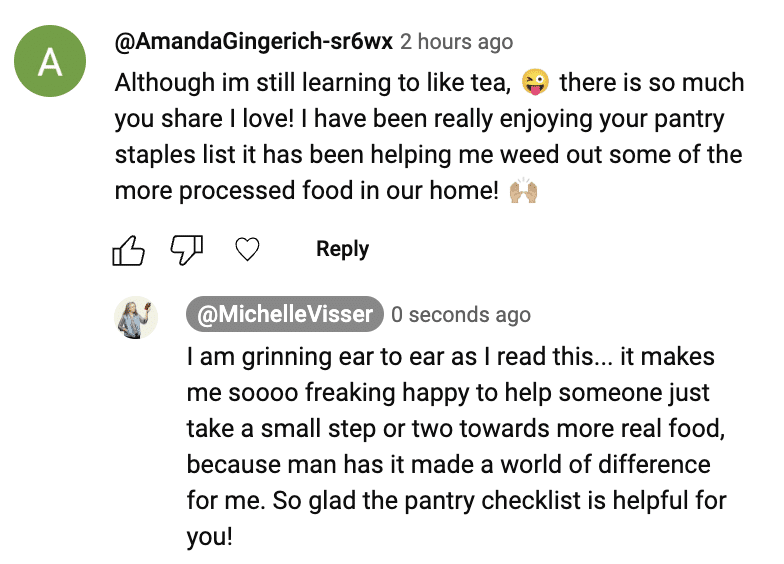
Can you buy good lard?
You can absolutely source good lard, either as fat that you can render down yourself, or as already rendered lard. Here are some tips:
- If you live in New England and would like to purchase a whole or half a pig, I would love to chat about how our family farm can help you load your freezer next fall (with amazing pig fat as well as delicious pasture-raised meat). We keep a waiting list, and I am always happy to meet new customers and expand our plans for next year, to make sure your family enjoys high-quality meat next year if I can’t help you today. To message me, hop over to instagram or send an email to michelle(dot)visser(at)outlook(dot)com.
- Find local pig farmers and ask around until you can hopefully find one who either sells lard they have rendered or maybe the raw fat, which you can then render yourself. (Or just store away until you use it, in the case of caul fat.) Go here for my Ultimate Guide to Rendering Lard
- Go to eatwild.com and search for a pig farm near you.
- Order online. Seriously. You can purchase this amazing fat, ready to use, and skipped to your door:
Lard made from the inner, leaf fat
Items I Use When Baking With Lard:
Talk to me!
If you have any questions, leave a comment below. And please tag me on ig to show me your amazing creations baked with the good fat @souly.rested.
More Information about Baking with Lard:
3 Types of Pork Lard — everything you need to know about each one.
The Complete Guide to Rendering Lard
My favorite ingredients I use every day in my farmhouse kitchen
“He satisfies the thirsty and fills the hungry with good things.” Psalm 107:9
Pin this for later!
Click on the image below to pin this post.
Find out why SoulyRested was considered to be one of the One of the Top Homesteading Blogs.
Glance at my Resource Page if you’d like to get a glimpse of all the supplies I use and recommend for everything from gardening, to homeschooling, to chicken care, to nature journaling, to maple syrup making.
And be sure to download my 8-page Pantry Checklist and have instant access to the best ingredients and exclusive discounts.
I’d love to connect!
To find me in some other neck of the woods, just click any (or every!) icon below:
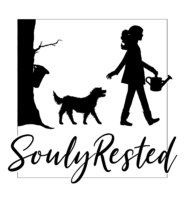
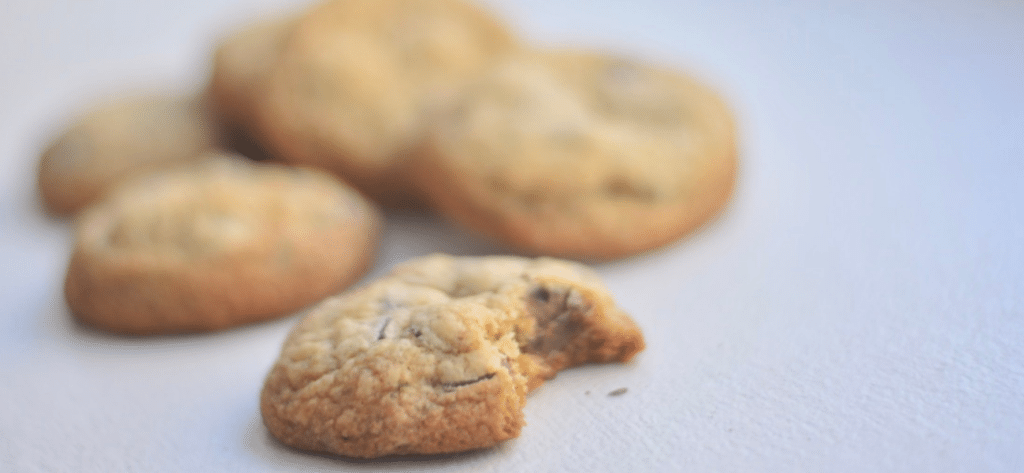
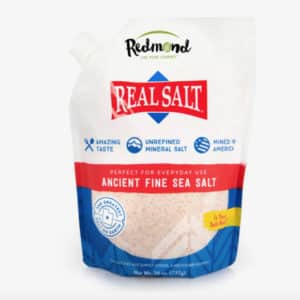
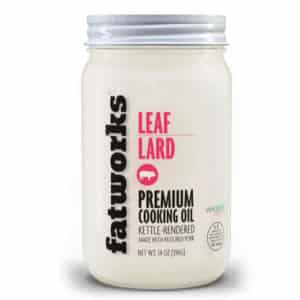
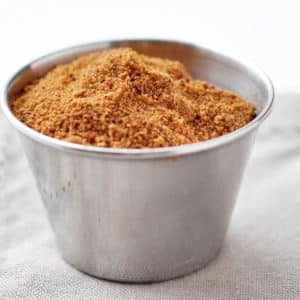
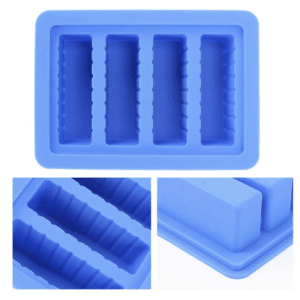
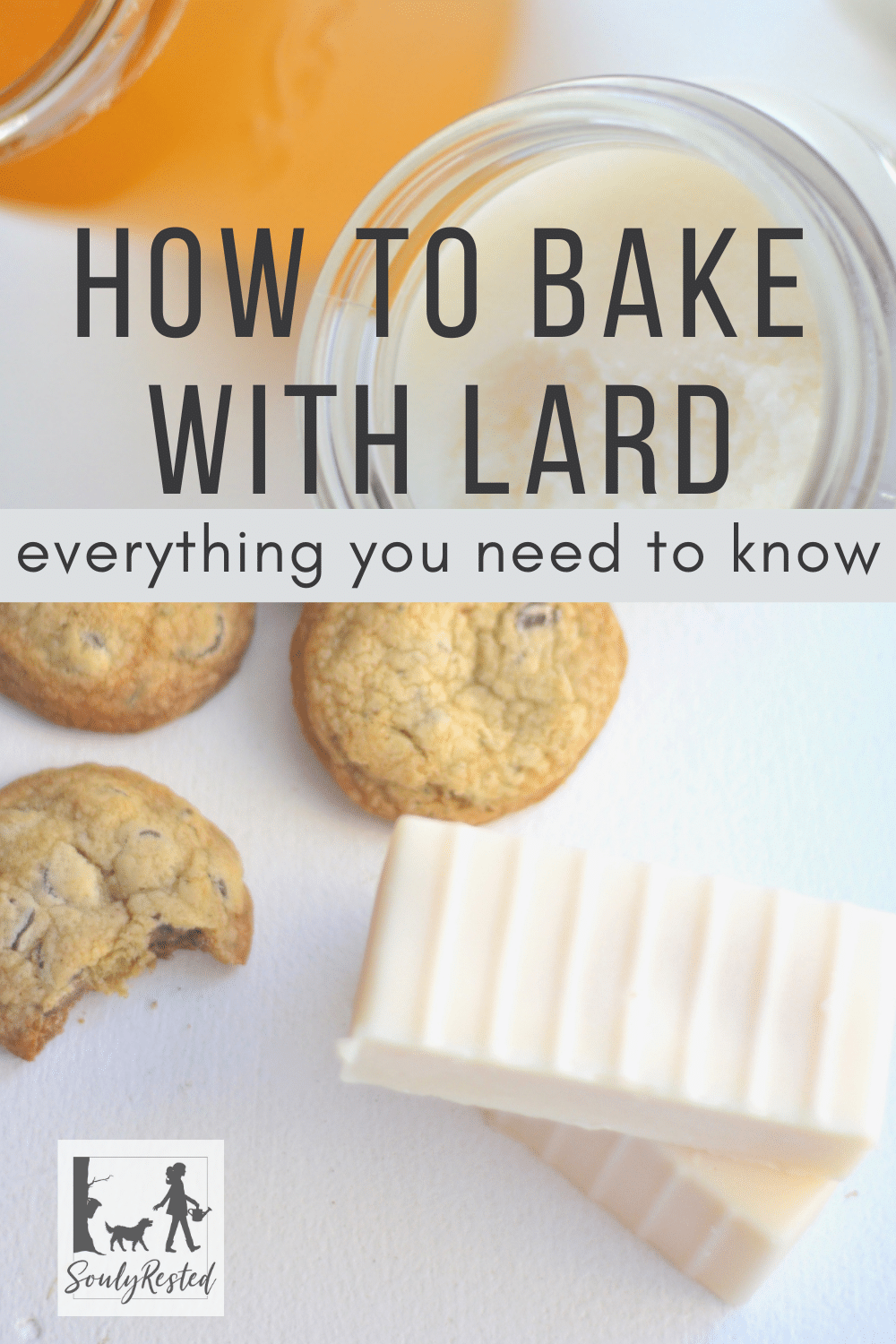





I was curious if you use butter for anything, and if so, what? It seems lard is superior to it in all ways.
Such a good article on lard
I’m convinced!
Do you melt the lard if the recipe calls for an oil or melted butter? For example, flour tortillas or cakes that call for vegetable oil?
You certainly could… never something I considered doing. I will grab the avocado oil when I need a liquid oil